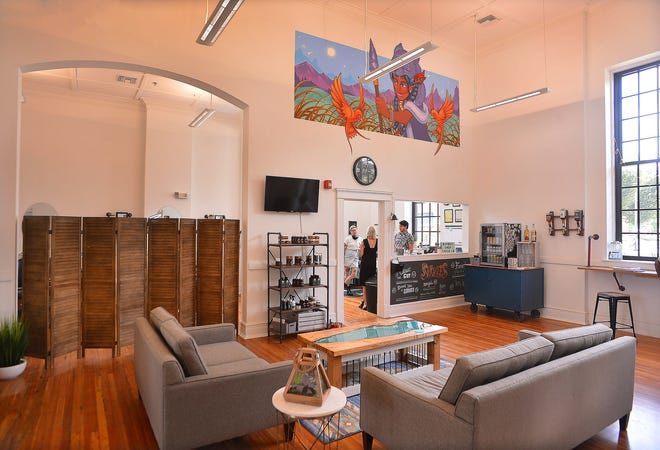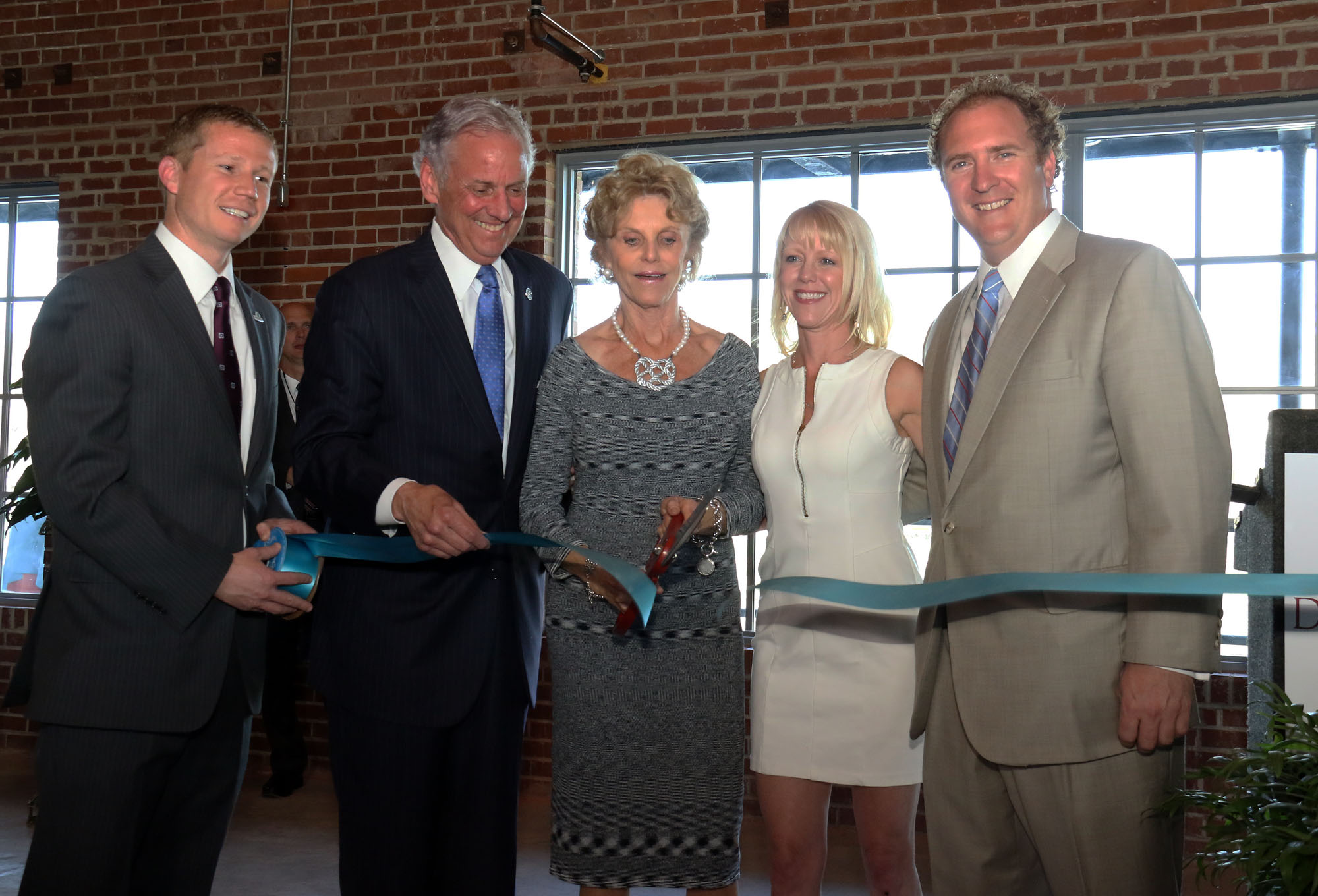She once doled out uppercuts. Now she gives haircuts.
But Ashley Rushing is still tough — covered in tattoos all the way up to her neck and a blue-green pixie cut, she’s opened up the Bareknuckle Barbershop in Drayton Mills Marketplace, the name a nod to her MMA fighting career.
Once known as Doll Face in the MMA world, Rushing fought for a little more than a decade, starting with an amateur career at a North Carolina gym. She began her professional career when she moved to South Carolina and fought in two professional fights with Invicta Fighting Championships, a women’s MMA organization.

But she’s always had a passion for cosmetology, too, and has worked as a cosmetologist for about 15 years.
“My family’s always done hair, so I’ve kind of always been around it,” Rushing said.
When Rushing broke a lower vertebrae ending her fighting career, she decided to focus on hair full time which led to the opening of Bareknuckle Barbershop.

She co-owns the shop with Tyler Maupin, who isn’t a stylist, but works on the business and financial side. He created the name and helped with the design for the shop.
Artist Leon Wilkie created the logo – two fists (or bare knuckles) grasping a pair of scissors. The shop also displays some of Rushing’s belts from her fighting career.
However, Maupin and Rushing don’t go way back. Maupin was just a client of Rushing’s when she worked at a different Spartanburg barber shop before opening up her own.

“I scheduled an appointment with her when she worked at the Black Derby (in downtown Spartanburg),” Maupin said. “And then she noticed that I was coming in every week and then we just started talking.”
Rushing and Maupin opened up shop Aug. 1, behind Dray Bar & Grill, and business has been successful for the almost two weeks since they’ve opened, they said.
Bareknuckle Barbershop hasn’t faced too many challenges due to COVID-19 either, Rushing said. It opened after Gov. Henry McMaster reopened salons and barber shops in South Carolina.
“I think with men’s grooming, it’s always gonna be around,” Rushing said. “Men have to get their hair cut.”


And if this barber shop isn’t tough enough for you yet, there’s a whiskey tap right when you walk in.
“So I give complimentary beverages with all services,” Rushing said pointing to the tap and a beer fridge next to it. “So when guys come to check in they literally help themselves, pour themselves (a drink), grab whatever and just hang out.
Rushing found she prefers doing men’s cuts and women’s pixie cuts over a traditional women’s color and highlights that can take hours at a salon.
“I didn’t like standing behind someone’s head for four hours,” Rushing said. “I’ve only had my barbers license for about a year. But when I got into barbering, and started shaving, I got super addicted.”
There’s no specific demographic that comes into the shop, co-owner Maupin said, mostly men of all ages, races and ethnicities come to Bareknuckle Barbershop.
“Ashley really works with all types of ethnicities and hair,” Maupin said.
It may seem like a drastic career change, but to Rushing, her life is pretty simple.
“That’s it,” she said with a laugh. “Just an MMA background and hair.”
Contact Genna at gcontino@gannett.com or on Twitter @GennaContino.













